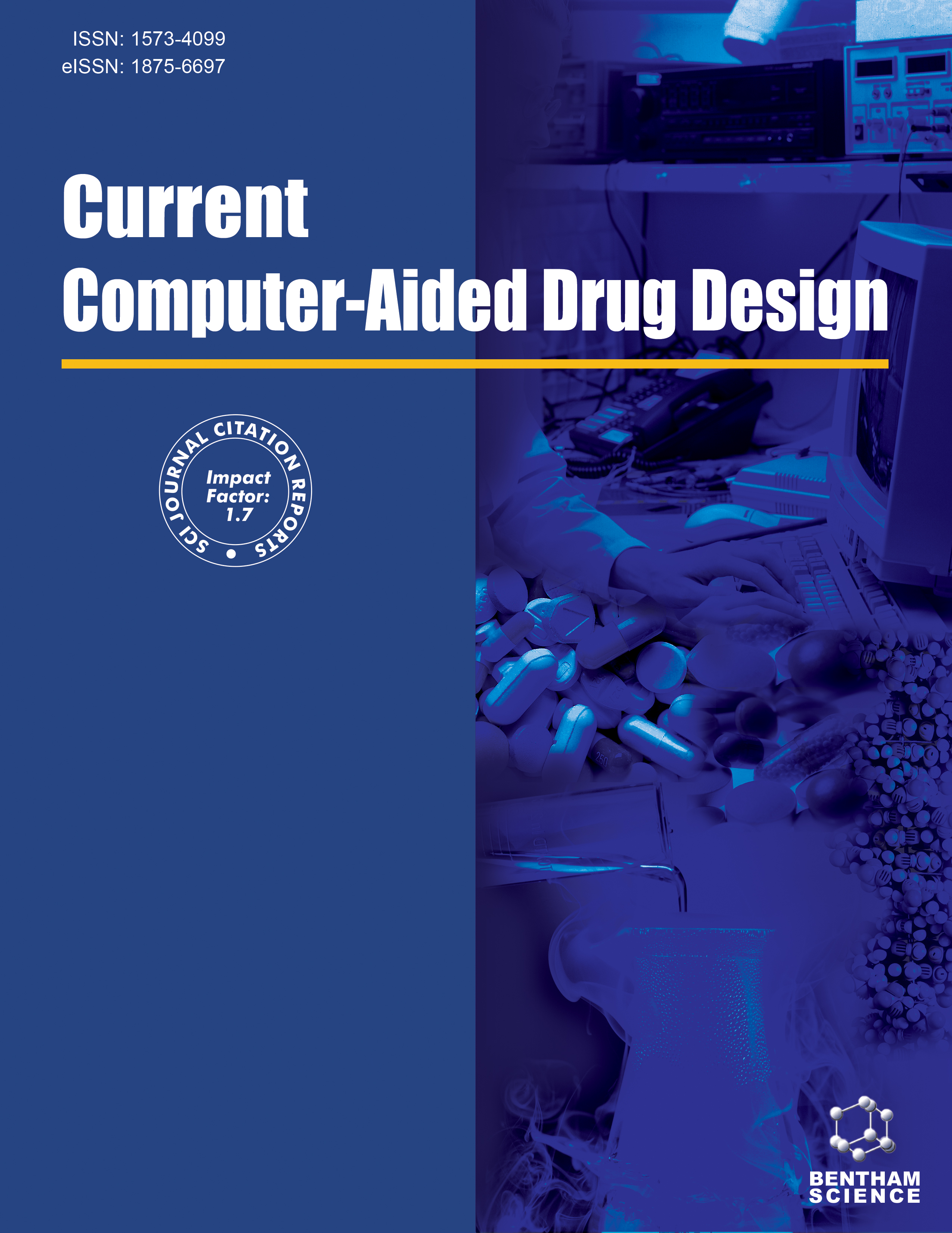- Home
- A-Z Publications
- Current Computer - Aided Drug Design
- Previous Issues
- Volume 17, Issue 5, 2021
Current Computer - Aided Drug Design - Volume 17, Issue 5, 2021
Volume 17, Issue 5, 2021
-
-
Synthesis and Molecular Simulation Studies of Mandelic Acid Peptidomimetic Derivatives as Aminopeptidase N Inhibitors
More LessAuthors: Jiawei Chen, Qiaoli Lv and Guogang TuBackground: The aminopeptidase N (APN) over-expressed in tumor cells plays a critical role in angiogenesis which makes the development of APN inhibitors an attractive strategy for cancer research. Aims and Objectives: It is clinically significant to develop potential APN inhibitors for cancer treatment. The design, synthesis, biological evaluation and molecular simulation of mandelic acid peptidomimetic derivatives as APN inh Read More
-
-
-
Screening of Drug Efficacy of Rosmarinic Acid Derivatives as Aurora Kinase Inhibitors by Computer-Aided Drug Design Method
More LessAuthors: Kaushik Sarkar, Subhajit Sarkar and Rajesh K. DasBackground: Aurora kinases (AKs) belong to the serine/threonine kinase family and play a crucial role in regulating the cell cycle. Therefore, AKs are the hopeful target for anticancer therapies and these findings have encouraged researchers to rigorously hunt small molecule aurora kinase inhibitors, not only for research articles but also for use as therapeutic agents. Objective: The present study helps us to identify and scre Read More
-
-
-
Screening of Antibiotics Against β-amyloid as Anti-amyloidogenic Agents: A Drug Repurposing Approach
More LessAuthors: Jahangir Alam, Varun Jaiswal and Lalit SharmaBackground: β-amyloid (Aβ) production and aggregation are the main culprits of Alzheimer’s disease (AD). There is no treatment available for halting the disease progression. Antibiotics are used not only to treat infections but also to some of the non-contagious diseases and have found active as anti-amyloidogenic agents. Objective: The aim of this work is to investigate anti-amyloidogenic activity of antibiotics as repurpo Read More
-
-
-
The Interaction of Isoflavone Phytoestrogens with ERα and ERβ by Molecular Docking and Molecular Dynamics Simulations
More LessAuthors: Ting Wang, Yaquan Liu, Xuming Zhuang, Feng Luan and Chunyan ZhaoAim and Objective: Isoflavone phytoestrogens, commonly present in natural plants, are closely related to human health. The combination of them with estrogen receptors in the body can play an important role in the prevention and treatment of cardiovascular diseases, cancer, and menopausal diseases. This research is conducted for the wider application of isoflavone phytoestrogens in various fields. Methods: In thi Read More
-
-
-
Structure Prediction of SPAK C-terminal Domain and Analysis of its Binding to RFXV/I Motifs by Homology Modelling, Docking and Molecular Dynamics Simulation Studies
More LessBackground: The STE20/SPS1-related proline/alanine-rich kinase (SPAK) is a component of WNK-SPAK/OSR1 signaling pathway that plays an essential role in blood pressure regulation. The function of SPAK is mediated by its highly conserved C-terminal domain (CTD) that interacts with RFXV/I motifs of upstream activators, WNK kinases, and downstream substrate, cation- chloride cotransporters. Objective: To determine Read More
-
-
-
Identification and Investigation of Chalcone Derivatives as Calcium Channel Blockers: Pharmacophore Modeling, Docking Studies, In vitro Screening, and 3D-QSAR Analysis
More LessAuthors: Amol S. Sherikar, Manish S. Bhatia and Rakesh P. DhavaleBackground: The chalcones were reported to have many biological activities by showing affinity towards many enzymatic targets. The effect of nitric oxide (NO) on calcium channel was extensively studied in different animals; the study was also carried out for NO donor drug and its effect on calcium channel. Till date, the inhibition of calcium channel is of prime importance in the medicinal chemistry to discover newer vascula Read More
-
-
-
Repurposing of Auranofin Against Bacterial Infections: An In silico and In vitro Study
More LessAuthors: Nidhi Sharma, Arti Singh, Ruchika Sharma and Anoop KumarAim: The aim of the study was to find out the role of auranofin as a promising broadspectrum antibacterial agent. Methods: In vitro assays (Percentage growth retardation, Bacterial growth kinetics, Biofilm formation assay) and In silico study (Molegro virtual docker (MVD) version 6.0 and Molecular operating environment (MOE) version 2008.10 software). Results: The in vitro assays have shown that auranofin has good anti Read More
-
Volumes & issues
-
Volume 21 (2025)
-
Volume 20 (2024)
-
Volume 19 (2023)
-
Volume 18 (2022)
-
Volume 17 (2021)
-
Volume 16 (2020)
-
Volume 15 (2019)
-
Volume 14 (2018)
-
Volume 13 (2017)
-
Volume 12 (2016)
-
Volume 11 (2015)
-
Volume 10 (2014)
-
Volume 9 (2013)
-
Volume 8 (2012)
-
Volume 7 (2011)
-
Volume 6 (2010)
-
Volume 5 (2009)
-
Volume 4 (2008)
-
Volume 3 (2007)
-
Volume 2 (2006)
-
Volume 1 (2005)
Most Read This Month
Article
content/journals/cad
Journal
10
5
false
en


